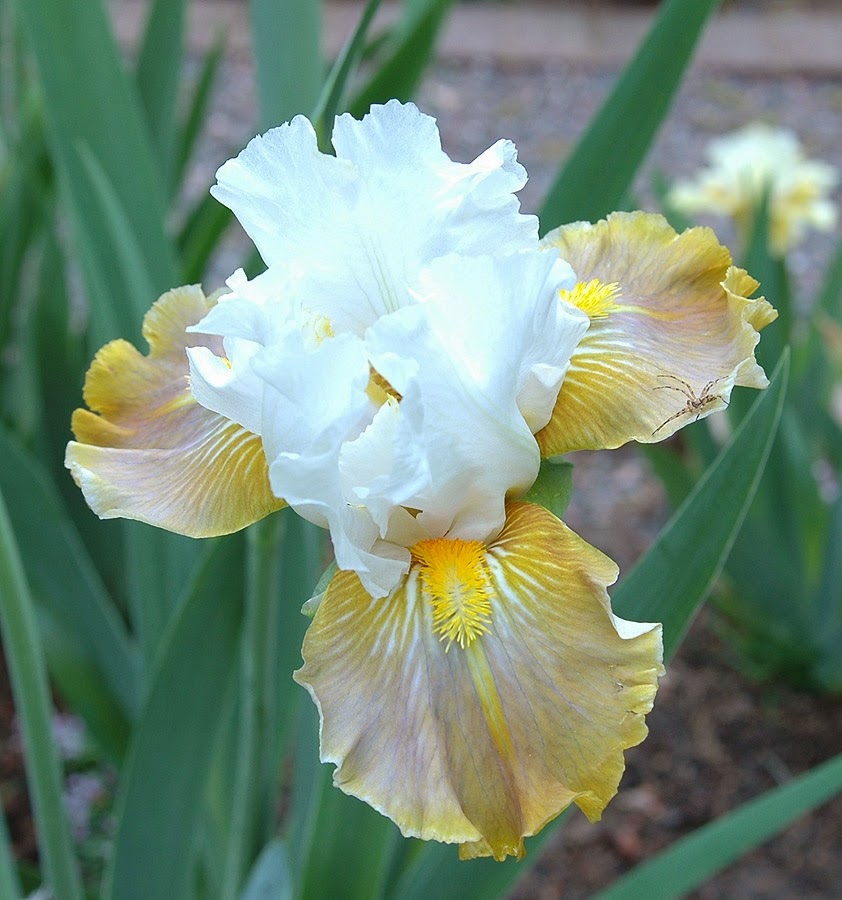Beginning hybridizers are often advised not to make decisions about new seedlings in their first year of bloom. This is good advice for a number of reasons, not the least of which is that a hasty decision could result in sending to the compost pile what might have been an award-winning variety.
Actual practice among hybridizers varies, with some advising that a seedling should be evaluated for at least 3 years and, at the other extreme, some yanking and discarding first-year plants that don't please them. Hybridizers whose growing space is limited may be forgiven if they fall into the latter category.
Even though my own garden is spatially challenged, I have always tried to follow the "at least 3 years" practice -- at first, simply because I respected the advice of more seasoned hybridizers that the first year of a seedling's bloom doesn't necessarily represent what the flower may do in its second or third year. Over the course of years, however, experience has taught me that irises not only mature, but do so at different rates. And maturation isn't the only thing that can change a plant's appearance. Replanting and moving from partial sun to full sun, for instance, can make quite a difference in stature, and a difference in soil can affect color.
In a recent post on Iris Lovers, I mentioned that I came close to discarding IB 'Coral Chimes' when I first saw it, because it seemed to be the ugly duckling in a bevy of mostly cheery yellow-and-white siblings. Its single bloom seemed muddy in color. Nevertheless, I spared it, and still couldn't decide in the second year. By the third year, however, it had matured into a glorious clump of coral-hued blossoms that reminded me of a fresh-faced choir. I didn't waste film on it the first 2 years, but here's how it looked in the third.
'Coral Chimes'
I also save ungerminated lots of seeds from what I consider important crosses. I mention that because the next example of maturation has a really unusual history. In November, 2000, I planted 45 seeds of Brazilian Holiday X 98G1:(Lady Friend x Chinese Treasure) in three pots. None germinated, but I saved the pots, letting them ride out the weather unprotected for the next 5 years (I'm stubborn). In 2005, a single seed sprouted. I planted it out as 05I1, although there was no "2". It didn't bloom until 2007, and then was only border bearded in height. Still, it was an amoena with dark velvet falls, and I was pleased.
05I1
'Lezghinka'
Finally, another benefit of holding onto seedlings for a while is that you may benefit from others' perspectives. Seedling 064C10 had, from my point of view, a rich heritage ((Marguerita x Mamauguin) x Best Bet) X Ranks of Blue. Nonetheless, it sat in my garden and was moved around as a re-select for some time until it produced a huge clump and attracted the attention of other irisarian visitors. Acting on their advice, I introduced it in 2012 as 'Night Bird'.
'Night Bird'
So, examine your seedlings with a critical eye, but don't be too quick to toss them.

















